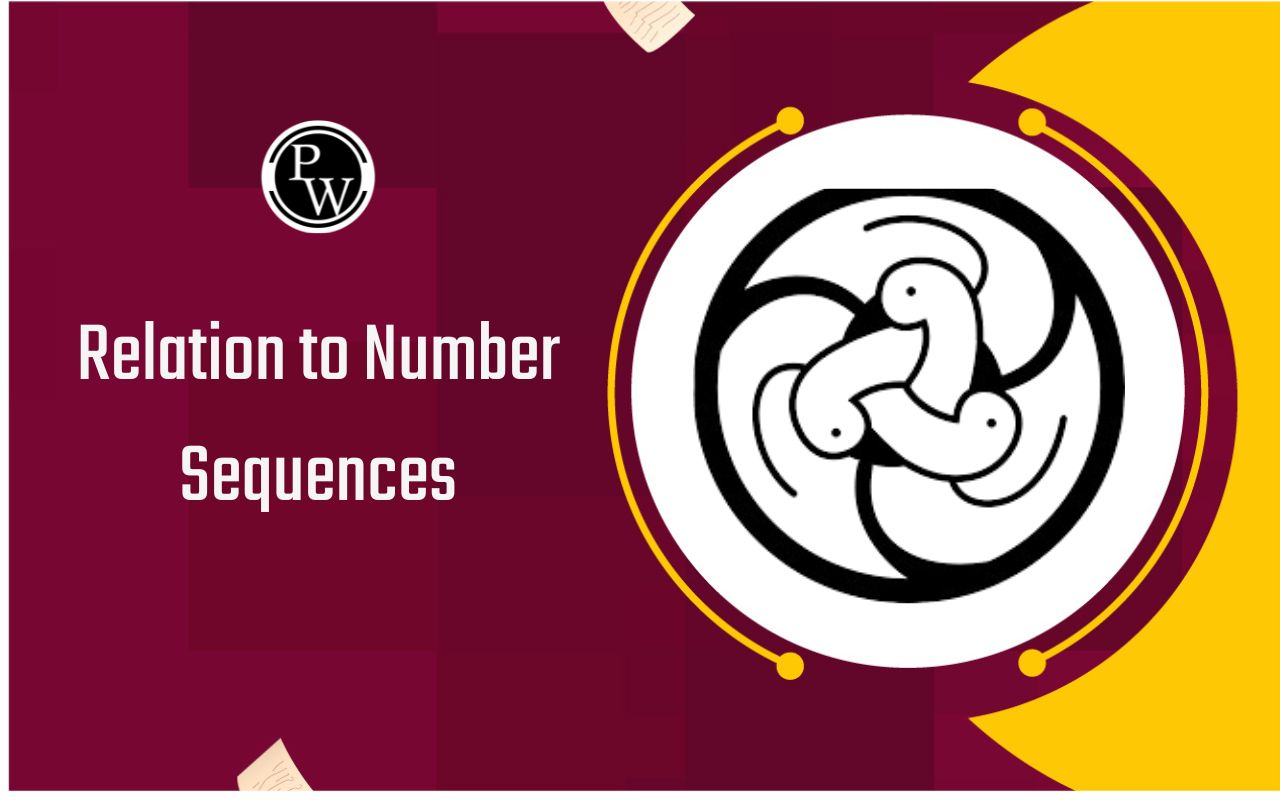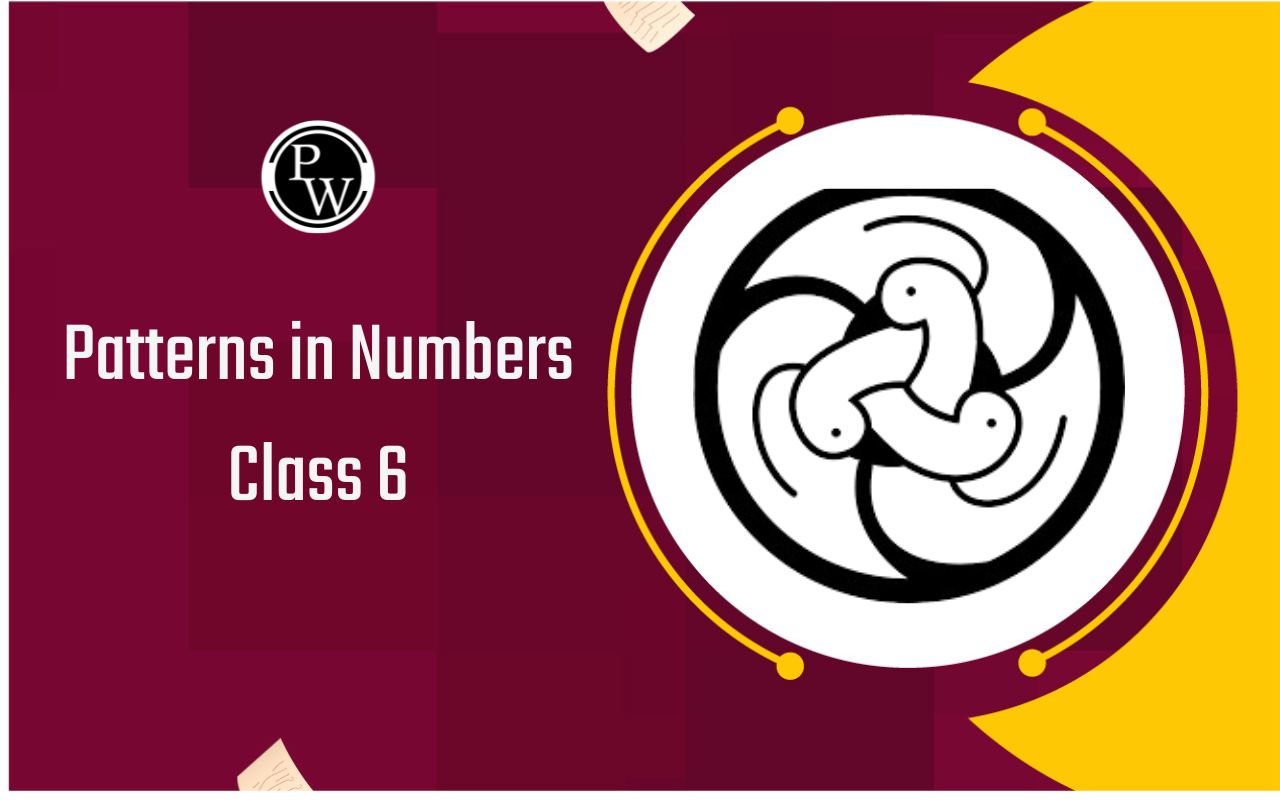
NCERT Solutions for Class 6 Maths Chapter 4
NCERT Solutions for Class 6 Maths Chapter 4: Class 6 Maths Chapter 4, Basic Geometrical Ideas, holds a crucial place in the syllabus as it builds the fundamental understanding of various geometric elements and figures among students. To understand the context and concepts of this chapter, you can access the NCERT solutions created by PhysicsWallah’s subject experts. It is important for the students who are looking for the top score in their final exam to practise the questions from NCERT book class 6. While solving the questions, students might face several difficulties. Therefore, students are provided with NCERT Solutions for Class 6 Chapter 4, in accordance with the CBSE syllabus by our experts, to resolve their queries.NCERT Solutions for Class 6 Maths Chapter 4 Overview
PhysicsWallah’s NCERT Solutions for Class 6 Maths Chapter 4, Basic Geometrical Ideas, aid students in comprehending Geometry. These solutions establish a solid foundation for each mathematical concept right from the start. The numerous examples available in the PDF books strengthen students' confidence in all topics. PW ensures that every NCERT Solution is provided to simplify and make studying interesting. Subjects such as Science, Maths, English, and Hindi become easier to learn with access to NCERT Solutions for Class 6 Science, Maths, and other subjects. NCERT Maths book Class 6 Chapter 4 solutions can be easily found on PW’s official website and are designed for students' easy comprehension. After studying the concepts in the textbook, practice the solved examples. If any doubts arise, students can post them in the chat box, which is a significant advantage of NCERT solutions.NCERT Solutions for Class 6 Maths Chapter 4 Basic Geometrical Ideas
Here are the NCERT Solutions for Class 6 Maths Chapter 4 Basic Geometrical Ideas with straightforward, step-by-step explanations. These solutions for Basic Geometrical Ideas are widely appreciated by class 6 students, serving as a helpful resource for completing homework and preparing for exams quickly. All questions and answers from NCERT Book of class 6 Math Chapter 4 are available here for free. Rest assured, all class 6 Math NCERT Solutions are crafted by experts and ensure 100% accuracy.Exercise 4.1 Page no: 74
1. Use the figure to name:
(a) Five points (b) A line (c) Four rays (d) Five line segments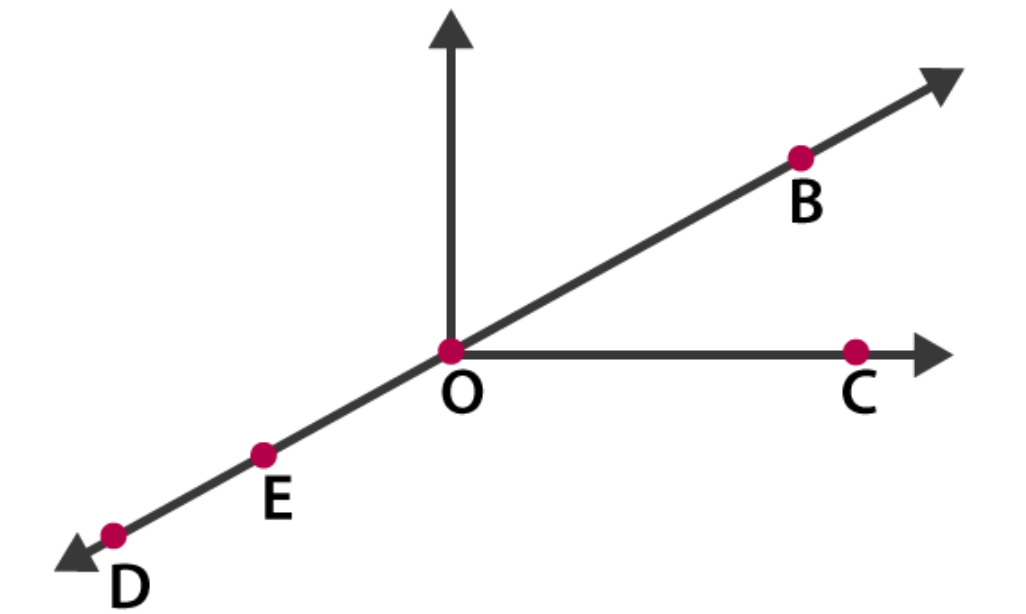 Solutions:
(a)
The five points are D, E, O, B and C
(b)
A line is
(c)
Four rays are
,
,
and
.
(d)
Five line segments are
,
,
,
and
2. Name the line given in all possible (twelve) ways, choosing only two letters at a time from the four given.
Solutions:
(a)
The five points are D, E, O, B and C
(b)
A line is
(c)
Four rays are
,
,
and
.
(d)
Five line segments are
,
,
,
and
2. Name the line given in all possible (twelve) ways, choosing only two letters at a time from the four given.
 Solutions:
The lines are
,
,
,
,
,
,
,
,
,
,
,
3. Use the figure to name:
(a) Line containing point E.
(b) Line passing through A.
(c) Line on which O lies
(d) Two pairs of intersecting lines.
Solutions:
The lines are
,
,
,
,
,
,
,
,
,
,
,
3. Use the figure to name:
(a) Line containing point E.
(b) Line passing through A.
(c) Line on which O lies
(d) Two pairs of intersecting lines.
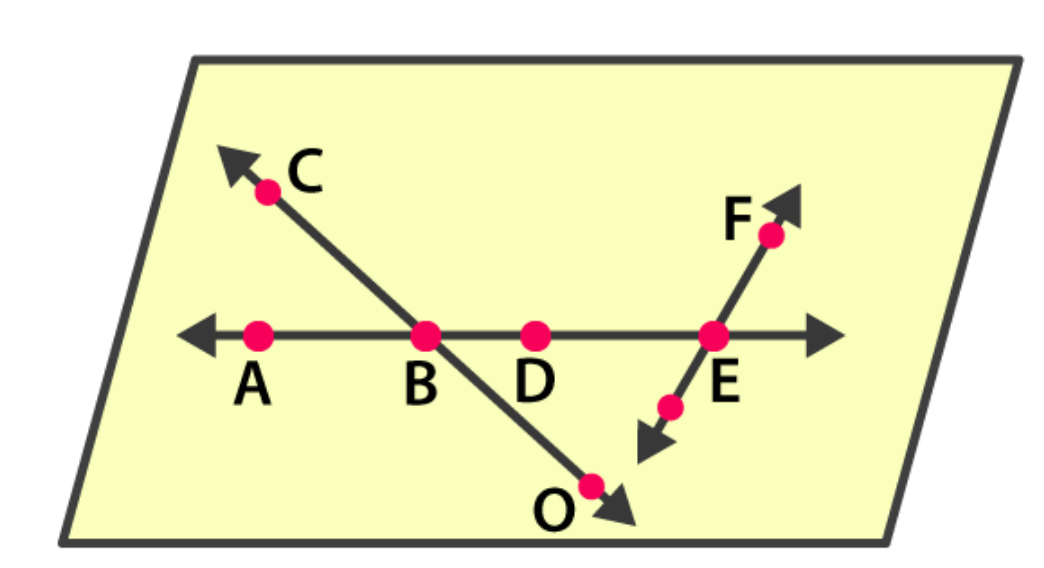 Solutions:
(a)
Line containing point E is
(b)
Line passing through A is
(c)
Line on which O lies is
(d)
Two pairs of intersecting lines are
,
and
,
4. How many lines can pass through (a) one given point? (b) two given points?
Solutions:
(a)
Countless lines can pass through a given point.
(b)
Only one line can pass through two given points.
Solutions:
(a)
Line containing point E is
(b)
Line passing through A is
(c)
Line on which O lies is
(d)
Two pairs of intersecting lines are
,
and
,
4. How many lines can pass through (a) one given point? (b) two given points?
Solutions:
(a)
Countless lines can pass through a given point.
(b)
Only one line can pass through two given points.
5. Draw a rough figure and label suitably in each of the following cases:
(a) Point P lies on . (b) and intersect at M. (c) Line l contains E and F but not D. (d) and meet at O. Solutions: (a)(b)
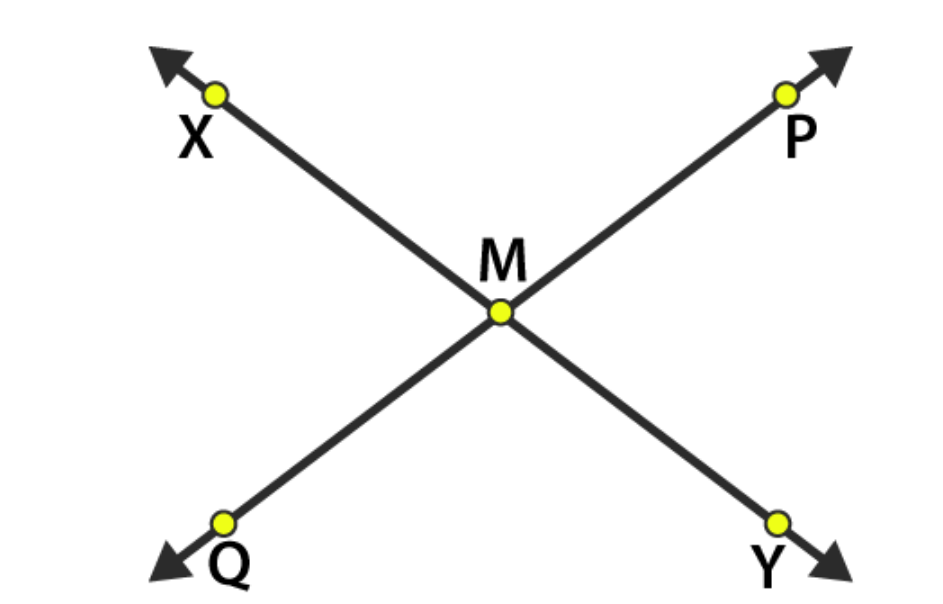
(c)
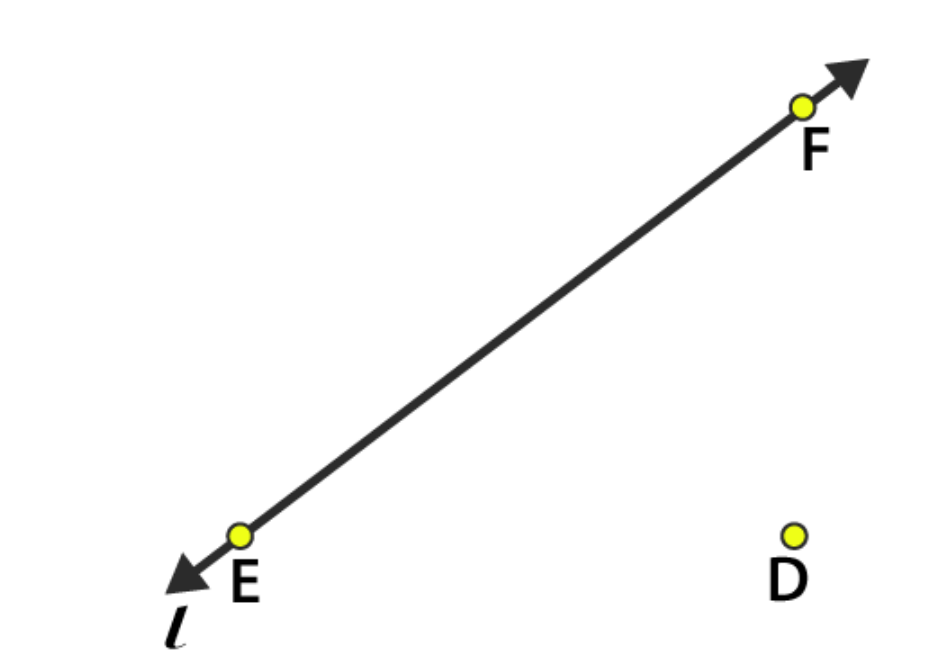
(d)
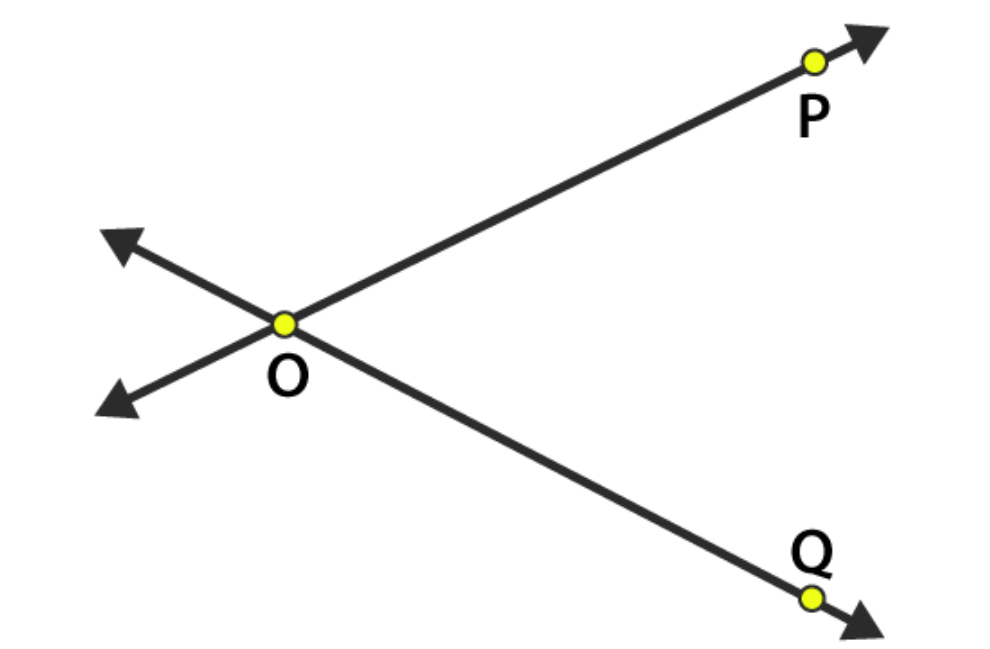 6. Consider the following figure of line
6. Consider the following figure of line
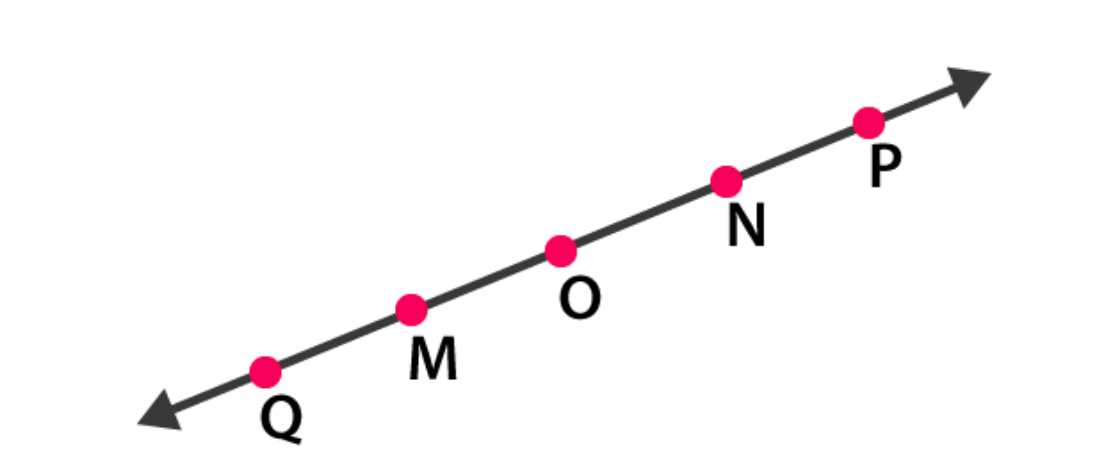 Solutions:
(a)
True
(b)
True
(c)
True
(d)
False
(e)
False
(f)
False
(g)
True
(h)
False
(i)
False
(j)
False
(k)
True
Solutions:
(a)
True
(b)
True
(c)
True
(d)
False
(e)
False
(f)
False
(g)
True
(h)
False
(i)
False
(j)
False
(k)
True
Exercise 4.2 Page No: 78
1. Classify the following curves as (i) Open or (ii) Closed
 Solutions:
(a)
The given curve is an open curve
(b)
The given curve is a closed curve
(c)
The given curve is an open curve
(d)
The given curve is a closed curve
(e)
The given curve is a closed curve
2. Draw rough diagrams to illustrate the following:
(a) Open curve
(b) Closed curve
Solutions
(a)
The below figure is an open curve
Solutions:
(a)
The given curve is an open curve
(b)
The given curve is a closed curve
(c)
The given curve is an open curve
(d)
The given curve is a closed curve
(e)
The given curve is a closed curve
2. Draw rough diagrams to illustrate the following:
(a) Open curve
(b) Closed curve
Solutions
(a)
The below figure is an open curve
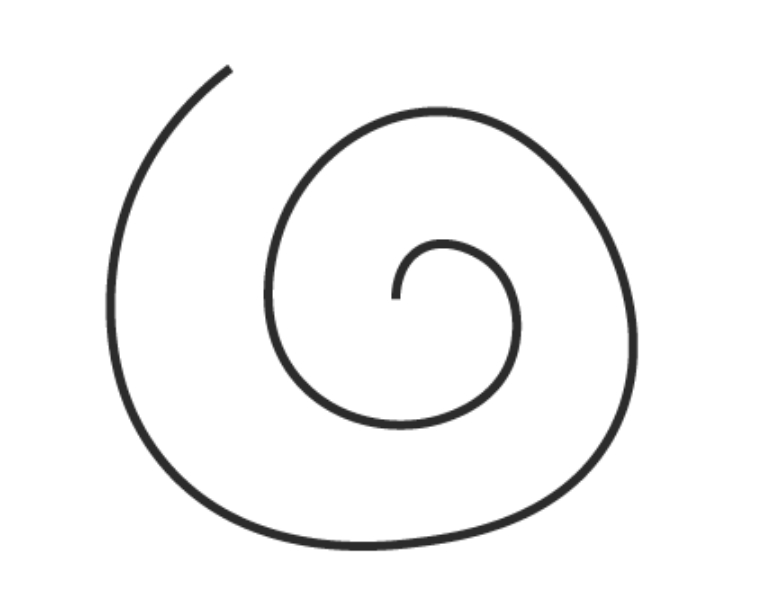 (b)
The below figure is a closed curve
(b)
The below figure is a closed curve
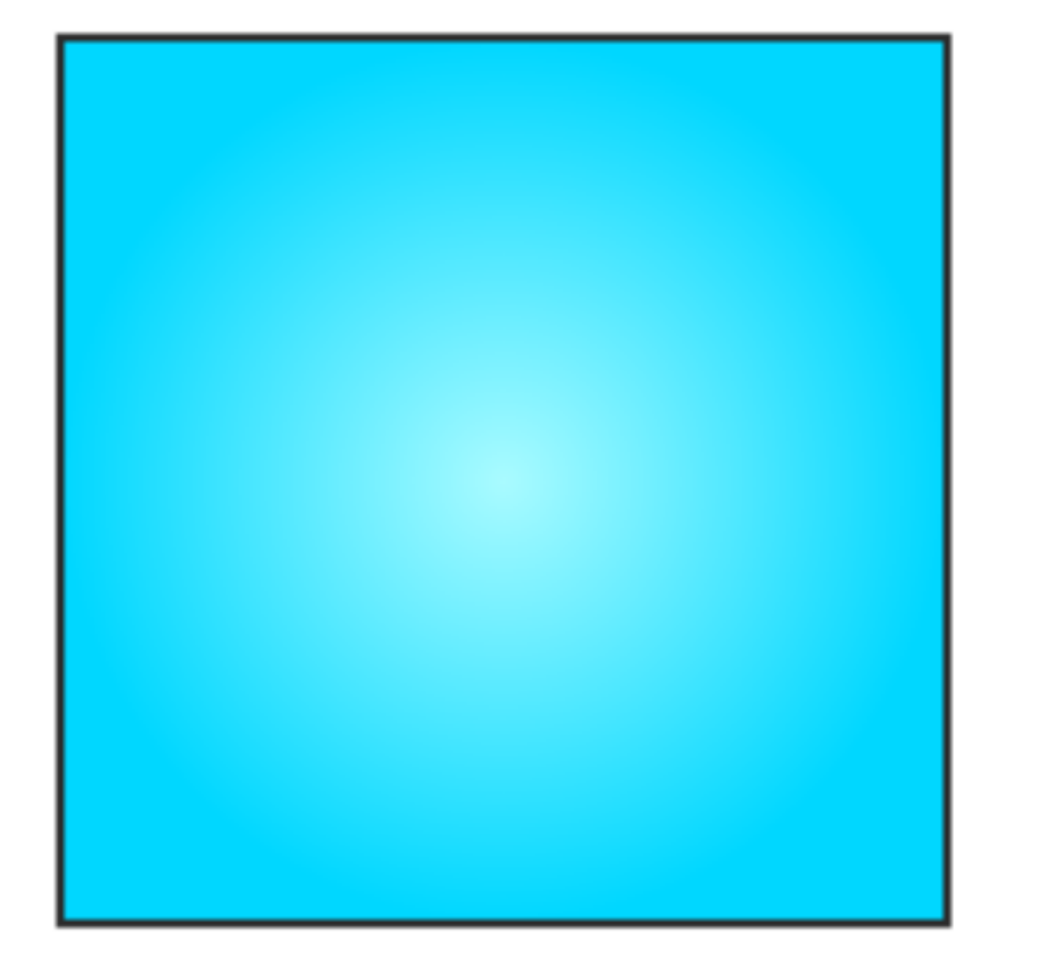 3. Draw any polygon and shade its interior.
Solutions:
The below figure is a polygon with a shaded interior.
3. Draw any polygon and shade its interior.
Solutions:
The below figure is a polygon with a shaded interior.
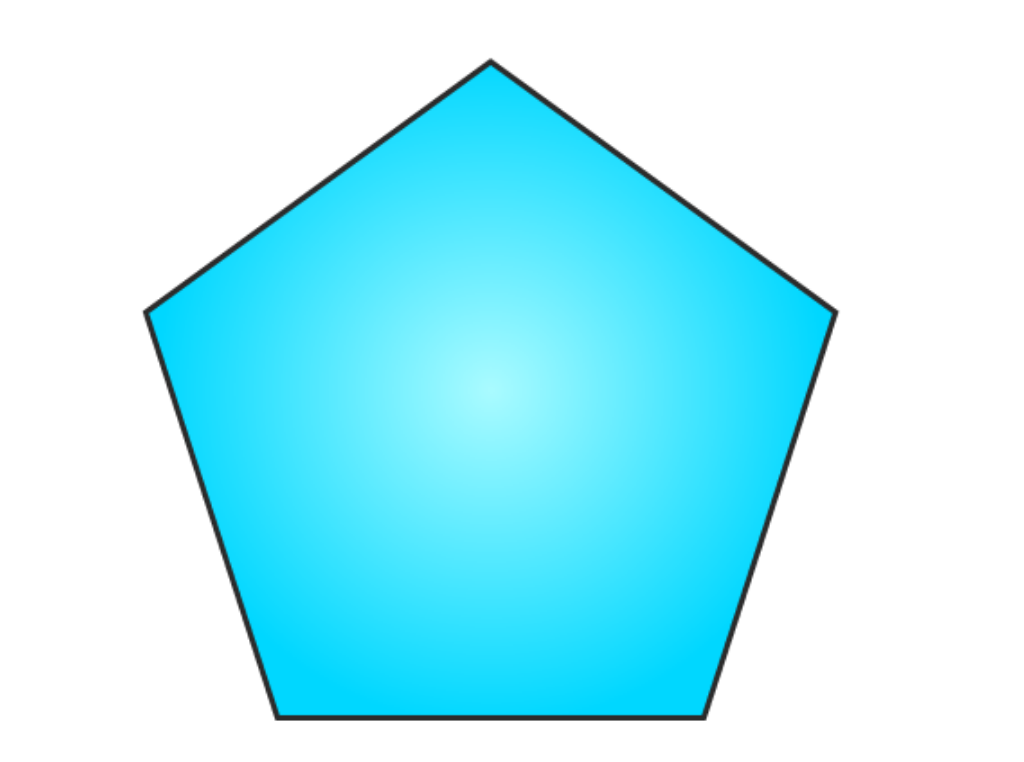 4. Consider the given figure and answer the questions:
(a) Is it a curve?
(b) Is it closed?
4. Consider the given figure and answer the questions:
(a) Is it a curve?
(b) Is it closed?
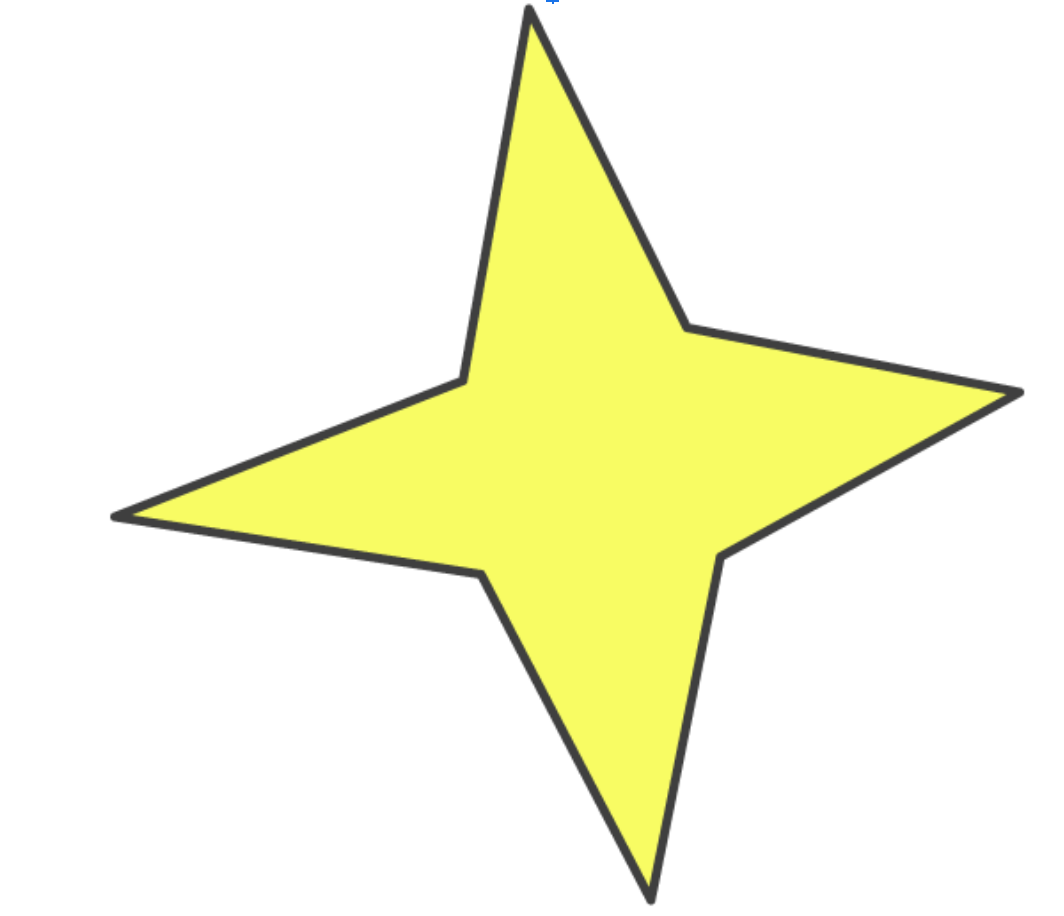 Solutions:
(a)
Yes, it is a curve
(b)
Yes, it is a closed curve
5. Illustrate, if possible, each one of the following with a rough diagram:
(a) A closed curve that is not a polygon.
(b) An open curve made up entirely of line segments.
(c) A polygon with two sides.
Solutions:
(a)
The below figure is a closed figure but not a polygon.
Solutions:
(a)
Yes, it is a curve
(b)
Yes, it is a closed curve
5. Illustrate, if possible, each one of the following with a rough diagram:
(a) A closed curve that is not a polygon.
(b) An open curve made up entirely of line segments.
(c) A polygon with two sides.
Solutions:
(a)
The below figure is a closed figure but not a polygon.
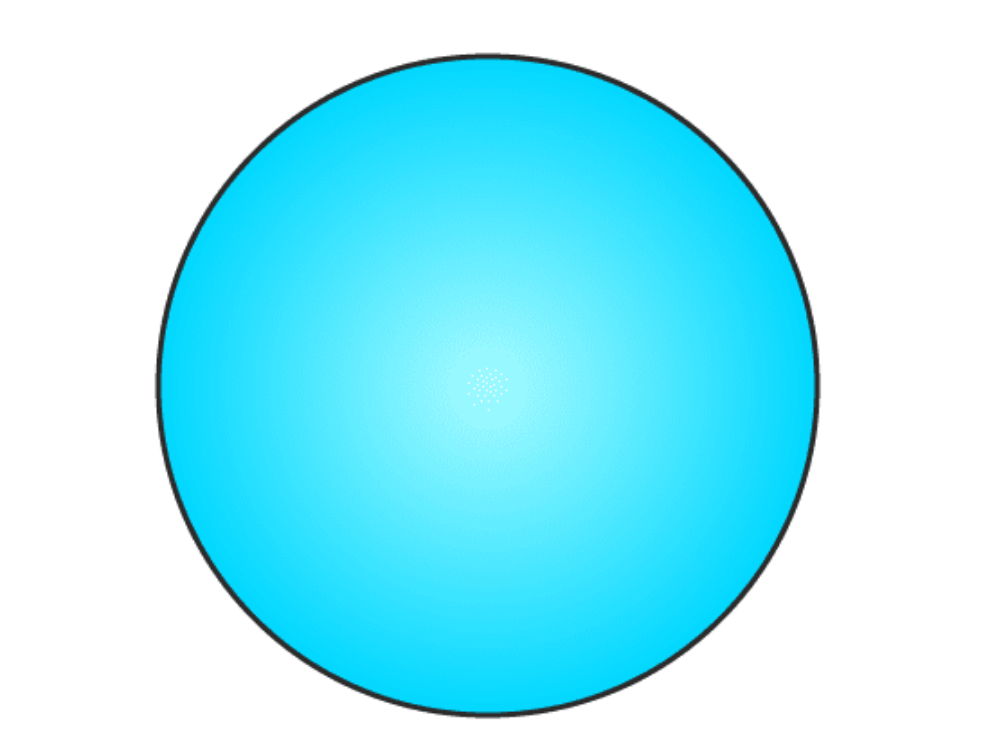 (b)
The below figure is an open curve made up entirely of line segments.
(b)
The below figure is an open curve made up entirely of line segments.
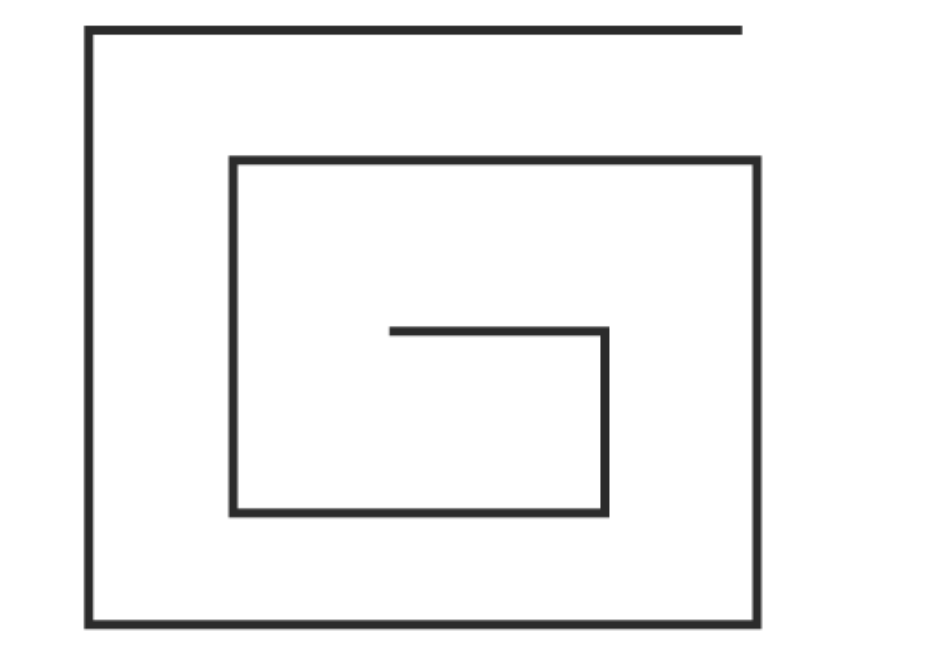 (c)
No, it’s not possible, as the polygon with the least number of sides is a triangle, which has three sides.
(c)
No, it’s not possible, as the polygon with the least number of sides is a triangle, which has three sides.
CBSE Board Exam Centre List 2024
Exercise 4.3 Page no: 80
1. Name the angles in the given figure.
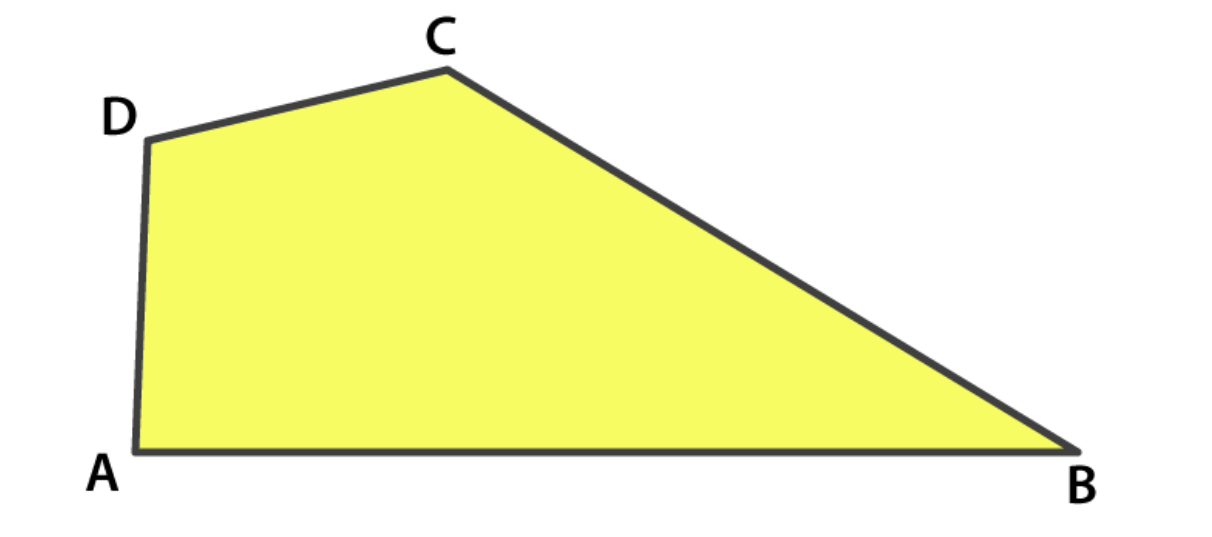 Solutions:
The angles are
∠
DAB,
∠
ABC,
∠
BCD and
∠
CDA
2. In the given diagram, name the points(s)
(a) In the interior of
∠
DOE
(b) In the exterior of
∠
EOF
(c) On
∠
EOF
Solutions:
The angles are
∠
DAB,
∠
ABC,
∠
BCD and
∠
CDA
2. In the given diagram, name the points(s)
(a) In the interior of
∠
DOE
(b) In the exterior of
∠
EOF
(c) On
∠
EOF
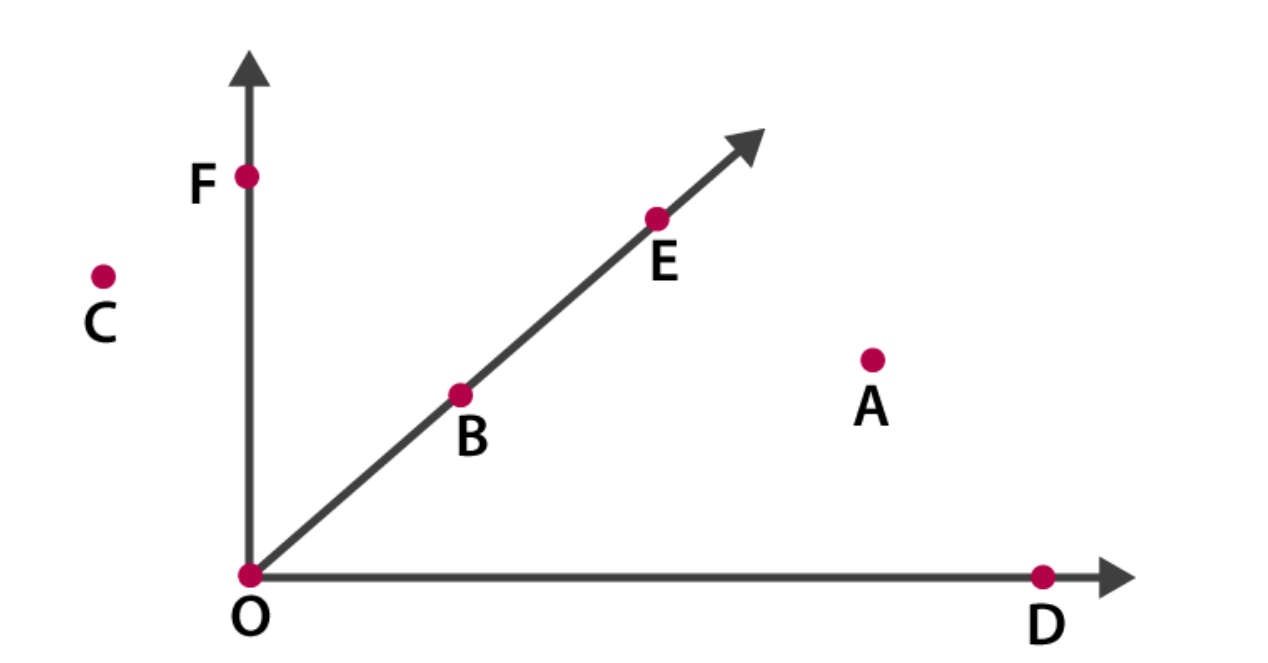 Solutions:
(a)
The point in the interior of
∠
DOE is A
(b)
The points in the exterior of
∠
EOF is C, A and D
(c)
The points on
∠
EOF are E, B, O and F
3. Draw rough diagrams of two angles such that they have
(a) One point in common
(b) Two points in common
(c) Three points in common
(d) Four points in common
(e) One ray in common
Solutions:
(a)
O is the common point between
∠
COD and
∠
AOB
Solutions:
(a)
The point in the interior of
∠
DOE is A
(b)
The points in the exterior of
∠
EOF is C, A and D
(c)
The points on
∠
EOF are E, B, O and F
3. Draw rough diagrams of two angles such that they have
(a) One point in common
(b) Two points in common
(c) Three points in common
(d) Four points in common
(e) One ray in common
Solutions:
(a)
O is the common point between
∠
COD and
∠
AOB
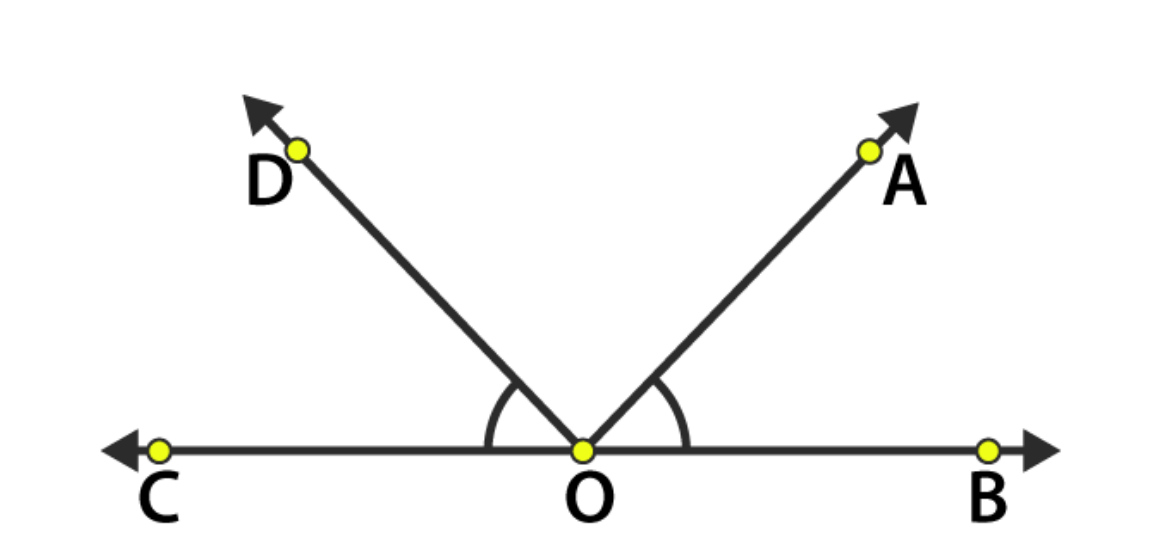 (b)
O and B are common points between
∠
AOB and
∠
BOC
(b)
O and B are common points between
∠
AOB and
∠
BOC
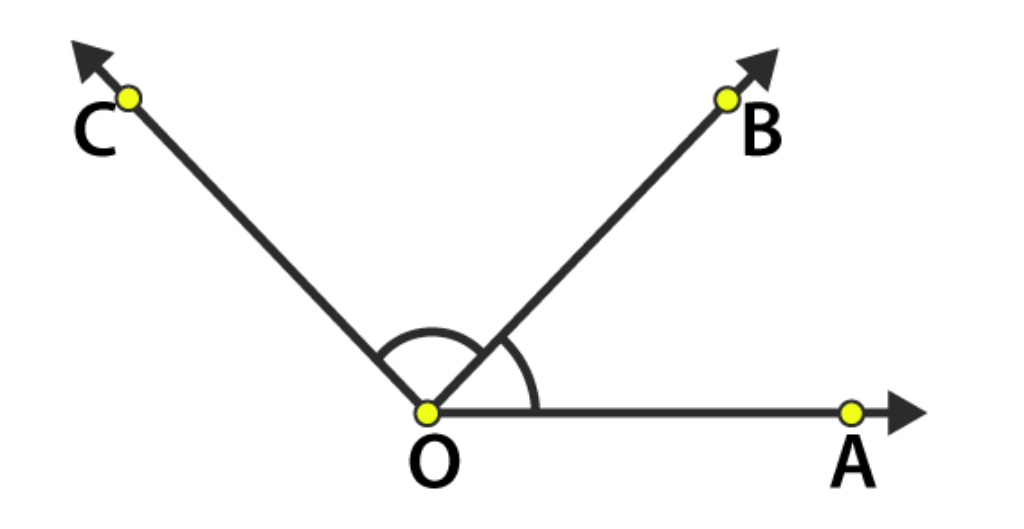 (c)
O, E and B are common points between
∠
AOB and
∠
BOC
(c)
O, E and B are common points between
∠
AOB and
∠
BOC
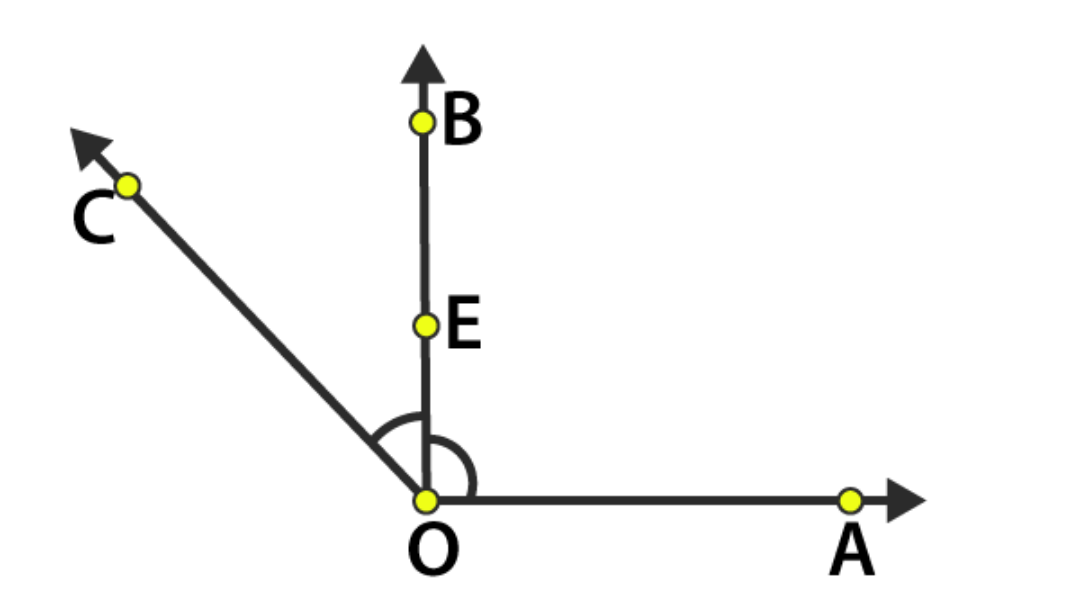 (d)
O, E, D and A are common points between
∠
BOA and
∠
COA
(d)
O, E, D and A are common points between
∠
BOA and
∠
COA
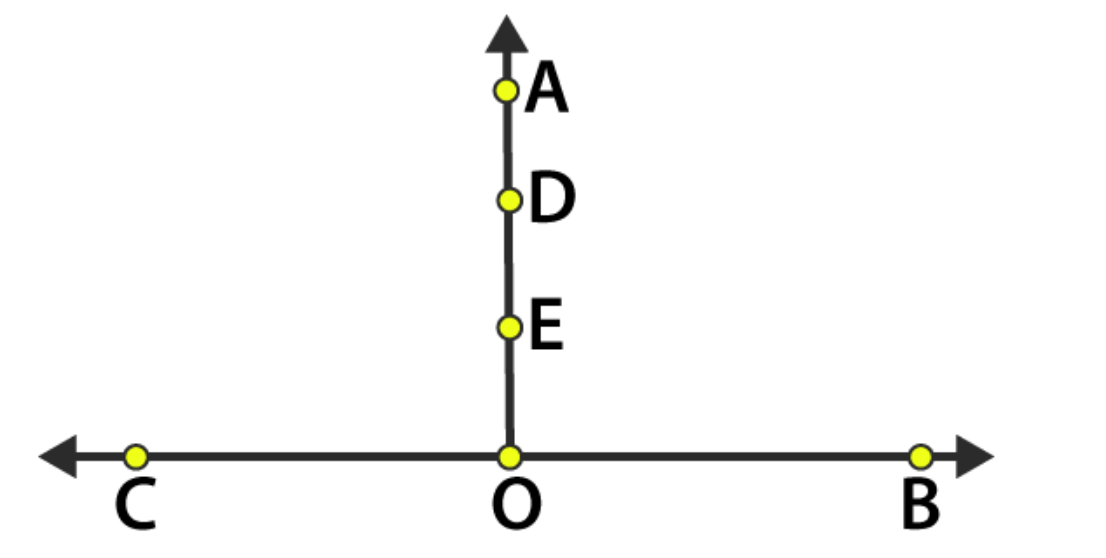 (e)
OC is a common ray between
∠
BOC and
∠
AOC
(e)
OC is a common ray between
∠
BOC and
∠
AOC
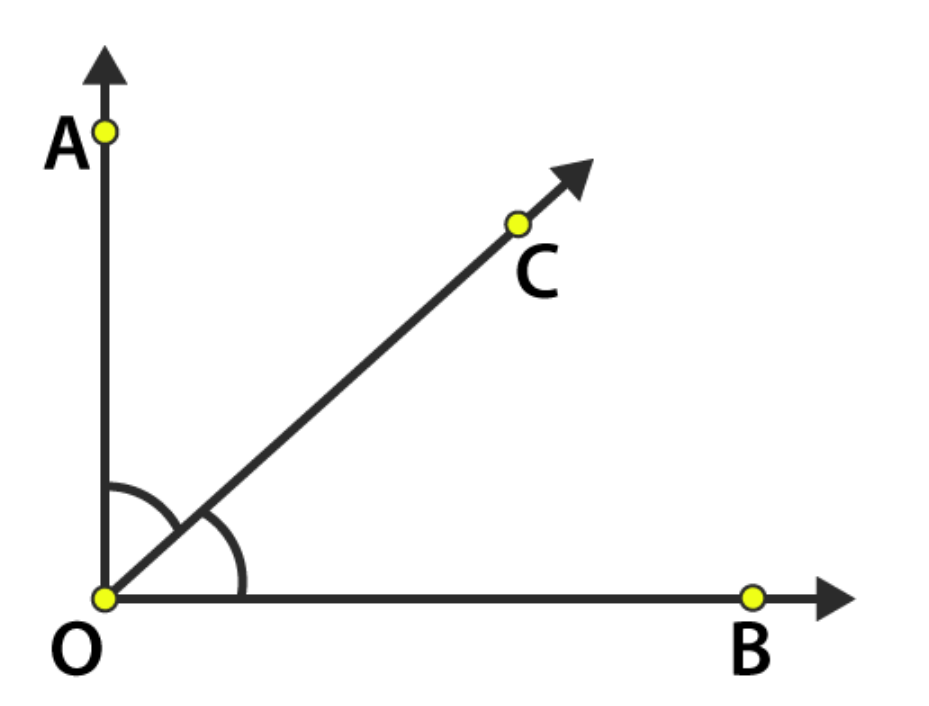
Exercise 4.4 page no: 81
1. Draw a rough sketch of a triangle ABC. Mark a point P in its interior and a point Q in its exterior. Is the point A in its exterior or in its interior?
Solutions: Point A lies on the given triangle ABC. It lies neither in the interior nor the exterior.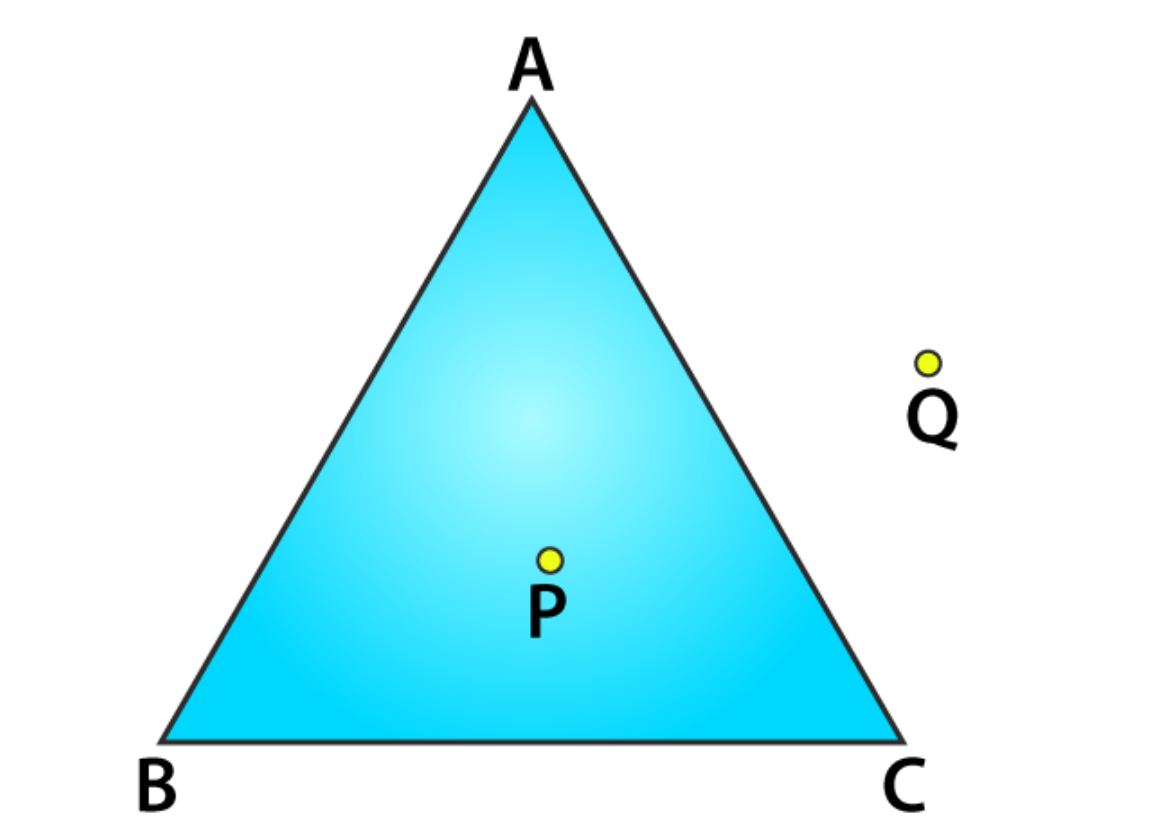 2. (a) Identify three triangles in the figure.
(b) Write the names of seven angles.
(c) Write the names of six line segments
(d) Which two triangles have
∠
B as common?
Solutions:
2. (a) Identify three triangles in the figure.
(b) Write the names of seven angles.
(c) Write the names of six line segments
(d) Which two triangles have
∠
B as common?
Solutions:
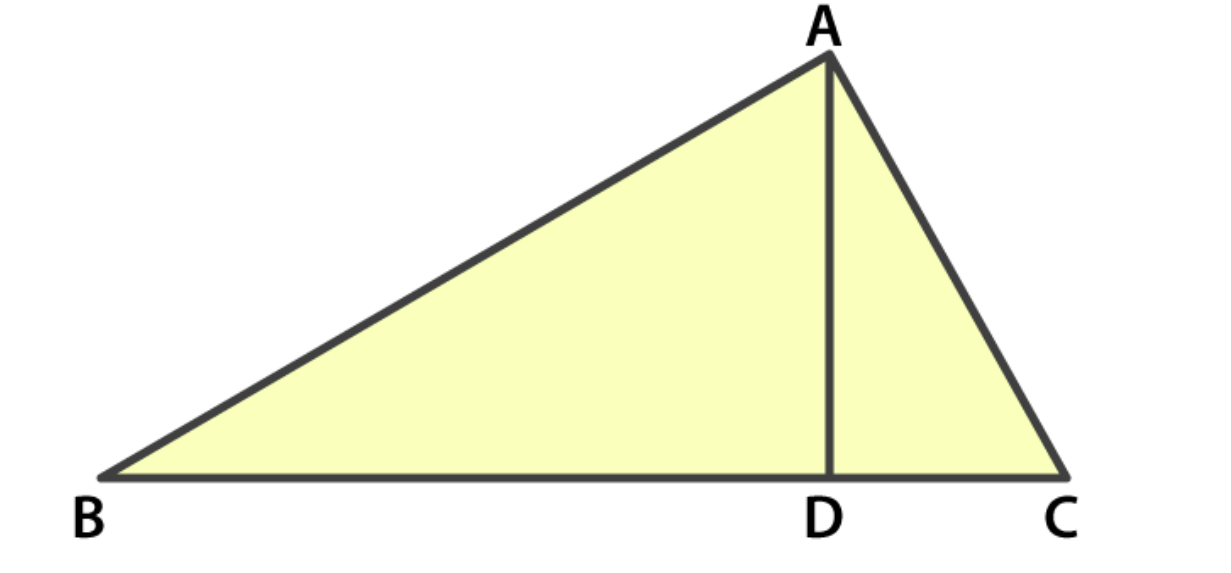 (a)
The three triangles are
∠
ABD,
∠
ACB,
∠
ADC
(b)
The angles are
∠
BAC,
∠
BAD,
∠
CAD,
∠
ADB,
∠
ADC,
∠
ABC,
∠
ACB
(c)
The line segments are
(a)
The three triangles are
∠
ABD,
∠
ACB,
∠
ADC
(b)
The angles are
∠
BAC,
∠
BAD,
∠
CAD,
∠
ADB,
∠
ADC,
∠
ABC,
∠
ACB
(c)
The line segments are
(d) ∠ ABD and ∠ ABC are triangles which have ∠ B as common.
Exercise 4.5 Page no: 82
1. Draw a rough sketch of a quadrilateral PQRS. Draw its diagonals. Name them. Is the meeting point of the diagonals in the interior or exterior of the quadrilateral? Solutions: PR and QS are the diagonals . They meet at point O, which is in the interior of the quadrilateral.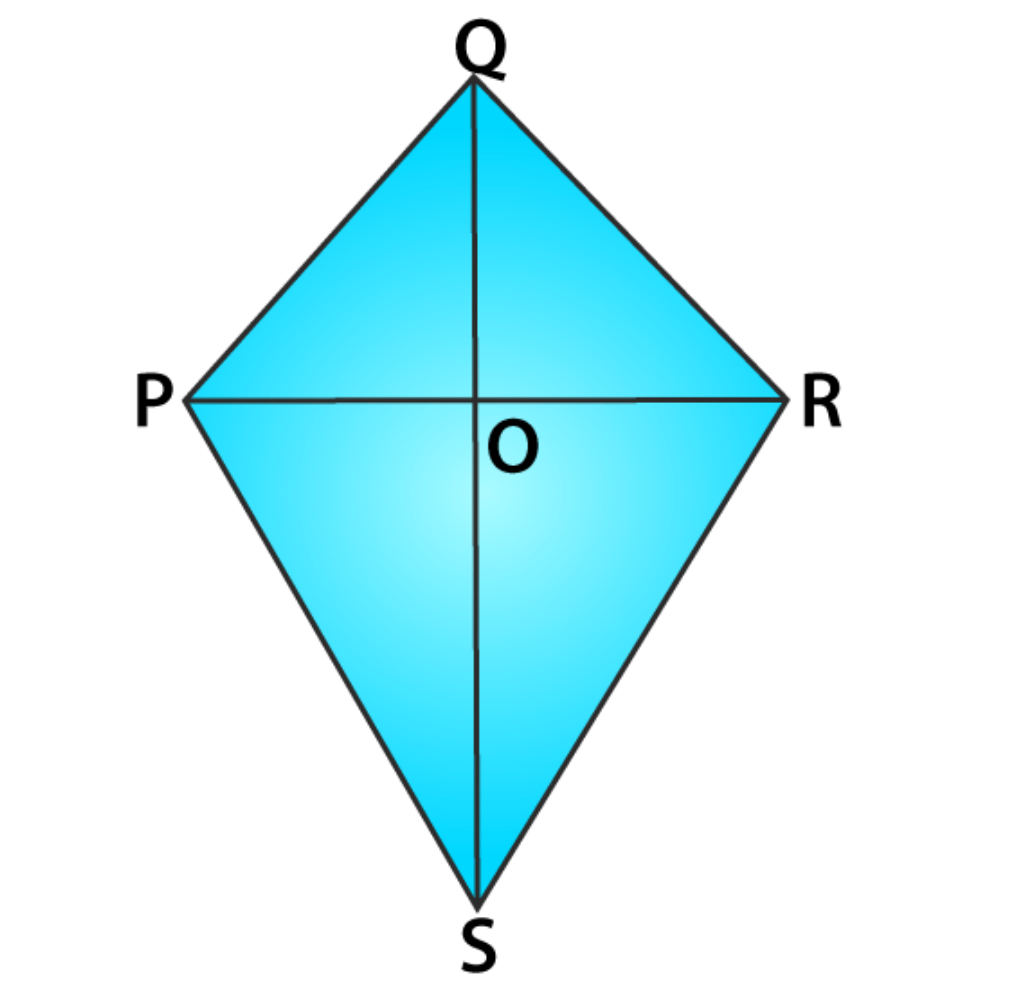 2. Draw a rough sketch of a quadrilateral KLMN. State,
(a) two pairs of opposite sides,
(b) two pairs of opposite angles,
(c) two pairs of adjacent sides,
(d) two pairs of adjacent angles.
Solutions:
2. Draw a rough sketch of a quadrilateral KLMN. State,
(a) two pairs of opposite sides,
(b) two pairs of opposite angles,
(c) two pairs of adjacent sides,
(d) two pairs of adjacent angles.
Solutions:
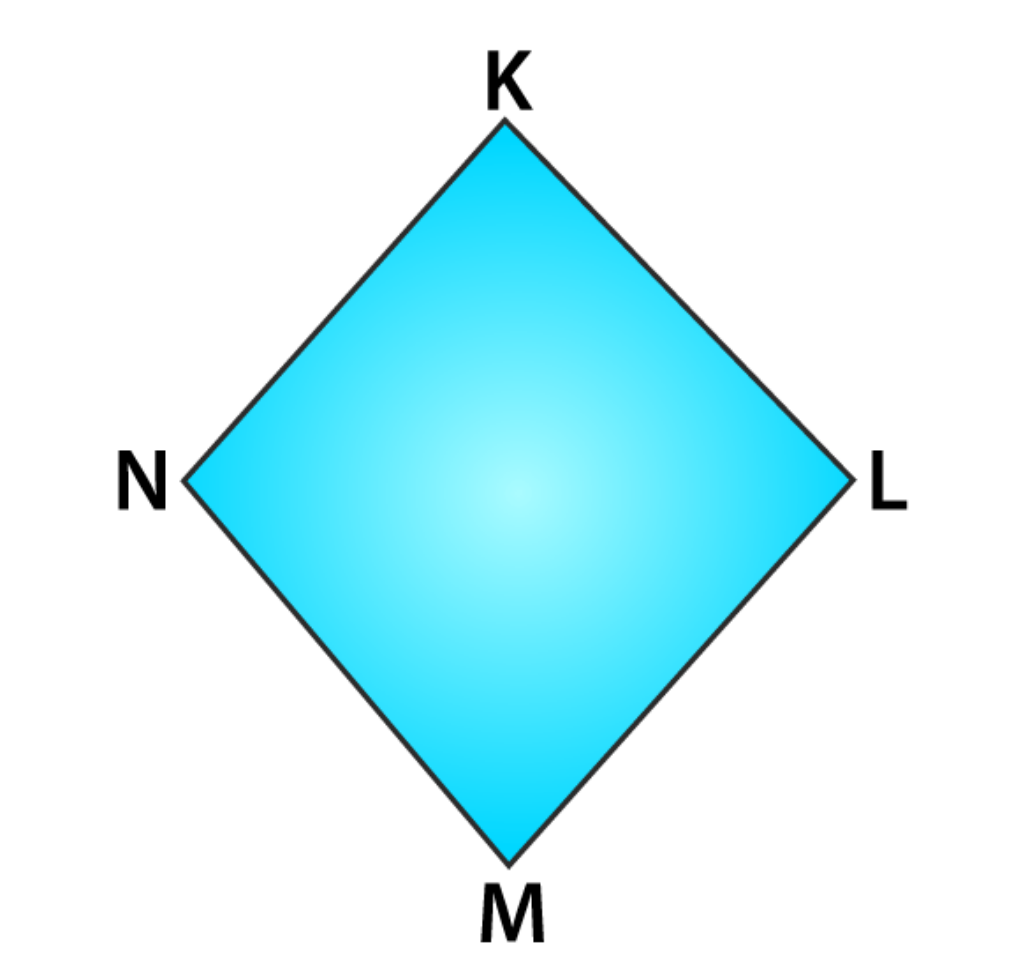 (a)
Two pairs of opposite sides are
(a)
Two pairs of opposite sides are
| CBSE Syllabus Class 6 | |
| CBSE Class 6 Science Syllabus | CBSE Class 6 Maths Syllabus |
| CBSE Class 6 Social Science Syllabus | CBSE Class 6 English Syllabus |
Exercise 4.6 page no: 84
1. From the figure, identify:
(a) the center of circle (b) three radii (c) a diameter (d) a chord (e) two points in the interior (f) a point in the exterior (g) a sector (h) a segment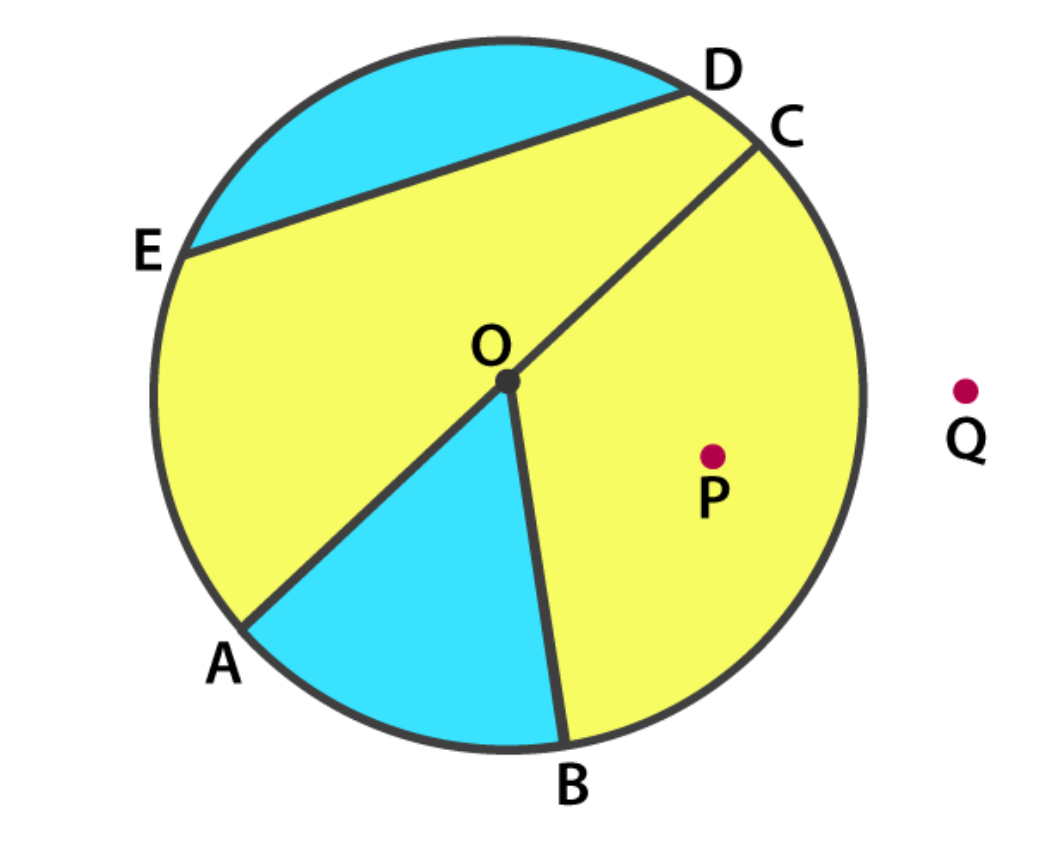 Solutions:
(a)
The center of the circle is O
(b)
Three radii are
,
,
(c)
A diameter is
(d)
A chord is
(e)
Two points in the interior are O and P
(f)
A point in the exterior is Q
(g)
A sector is AOB, i.e., shaded region
(h)
A segment is ED, i.e., shaded region
2. (a) Is every diameter of a circle also a chord?
(b) Is every chord of a circle also a diameter?
Solutions:
(a)
Yes, every diameter of a circle is also a chord. The diameter is also called the longest chord.
(b)
No, every chord is not a diameter.
3. Draw any circle and mark
(a) its center
(b) a radius
(c) a diameter
(d) a sector
(e) a segment
(f) a point in its interior
(g) a point in its exterior
(h) an arc
Solutions:
Solutions:
(a)
The center of the circle is O
(b)
Three radii are
,
,
(c)
A diameter is
(d)
A chord is
(e)
Two points in the interior are O and P
(f)
A point in the exterior is Q
(g)
A sector is AOB, i.e., shaded region
(h)
A segment is ED, i.e., shaded region
2. (a) Is every diameter of a circle also a chord?
(b) Is every chord of a circle also a diameter?
Solutions:
(a)
Yes, every diameter of a circle is also a chord. The diameter is also called the longest chord.
(b)
No, every chord is not a diameter.
3. Draw any circle and mark
(a) its center
(b) a radius
(c) a diameter
(d) a sector
(e) a segment
(f) a point in its interior
(g) a point in its exterior
(h) an arc
Solutions:
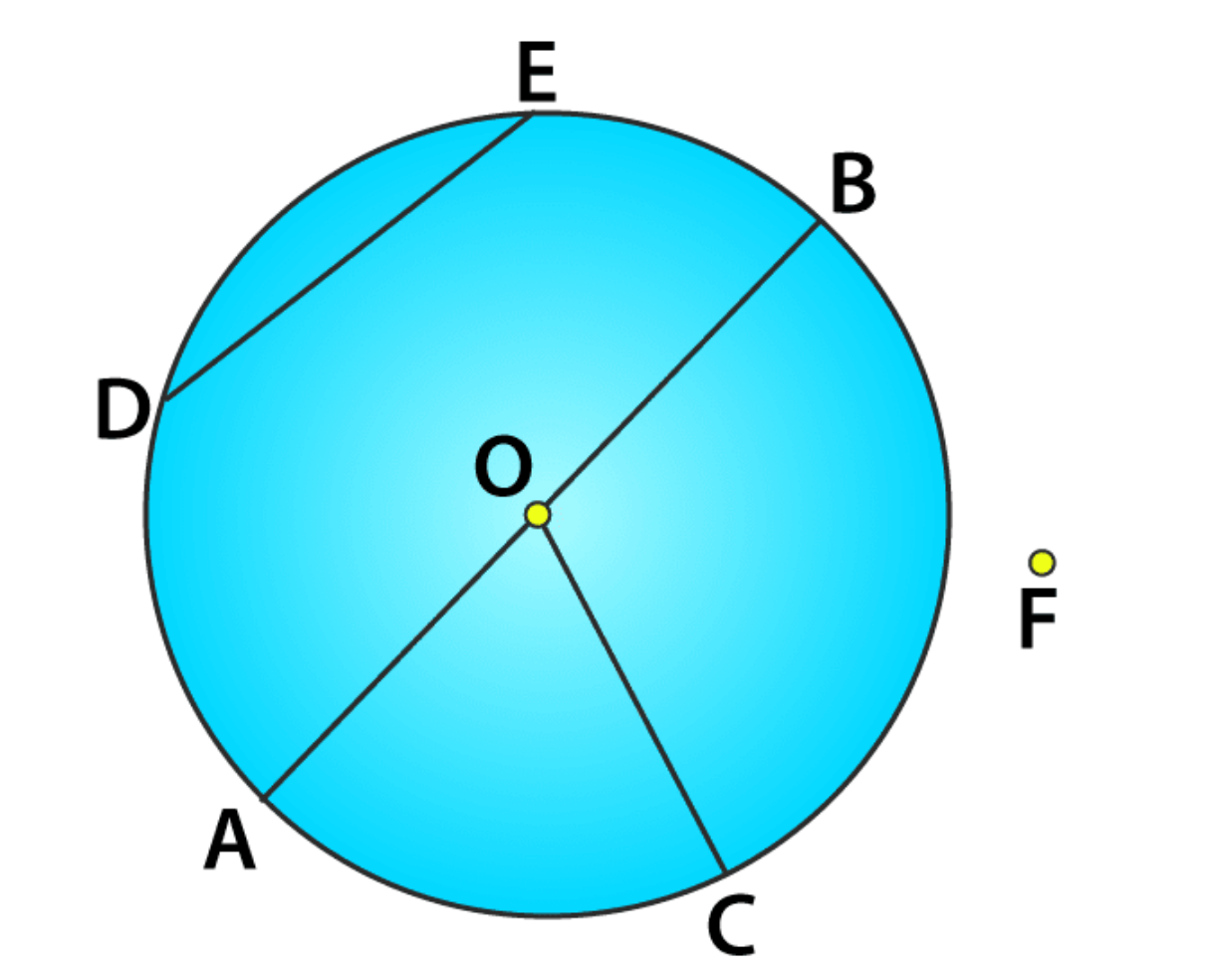 (a)
The center of the circle is O.
(b)
The radius is OC
(c)
A diameter is
(a)
The center of the circle is O.
(b)
The radius is OC
(c)
A diameter is
Importance of NCERT Solutions for Class 6 Maths Chapter 4
Geometry plays a crucial role in a student's mathematical learning journey. In Class 6, students encounter new ideas about geometric elements and shapes. They explore these concepts and learn to apply them to solve problems provided in the exercises. Understanding these concepts and their application in solving important problems from the chapter exercises is essential. The NCERT solutions, crafted by experts, help students comprehend how to tackle such problems using the basic principles of geometry taught in this chapter. These solutions assist students in finding accurate answers to all questions and guide them through a stepwise approach. Practicing these methods enhances their understanding of geometric ideas and their ability to apply them to problem-solving.'NCERT Solutions for Class 6 Maths Chapter-wise Solutions
Benefits of NCERT Solutions for Class 6 Maths Chapter 4
NCERT Solutions for Class 6 Maths Chapter 4, "Basic Geometrical Ideas," can be a valuable resource for students looking to gain a deeper understanding of fundamental geometric concepts. Here are some key benefits of utilizing these solutions: 1. Strong Foundation in Geometry: Chapter 4 introduces crucial geometric terms and concepts like points, lines, line segments, angles, parallel and intersecting lines, and more. NCERT Solutions provide clear and concise explanations, ensuring students grasp these foundational concepts before moving on to more complex ones. 2. Enhanced Problem-solving Skills: The solutions offer step-by-step explanations for various problems, helping students develop their analytical and problem-solving skills. By seeing how different types of problems are tackled, students learn to apply their understanding to new situations. 3. Increased Confidence in Exams: NCERT Solutions cover all the important questions and concepts from the chapter. By practicing these solutions, students gain confidence in their ability to handle exam-related questions and improve their overall performance. 4. Clarifying Doubts and Filling Gaps: If any concepts or problems remain unclear after studying the textbook, NCERT Solutions can act as a valuable tool for clarification. By going through the solutions, students can identify their weak areas and address them effectively. 5. Improved Learning Experience: Many NCERT Solutions websites and platforms offer additional resources like diagrams, animations, and interactive exercises. These resources can make learning more engaging and interactive, fostering a deeper understanding of the concepts. 6. Aligns with CBSE Syllabus and Exam Pattern: NCERT Solutions are specifically designed to align with the CBSE syllabus and exam pattern for Class 6 Maths. This ensures that students are practicing problems that are relevant to their exams and familiarizing themselves with the types of questions they might encounter.NCERT Solutions for Class 6 Maths Chapter 4 FAQs
Describe the circle with its parts?
A circle is a closed curve where all points are equidistant from the center. It has a radius (distance from center to any point on the circle) and a diameter (twice the radius).
Calculate the diameter of the circle if its radius is 4 cm?
The diameter of a circle with a radius of 4 cm is 8 cm.
What are Basic Geometrical Ideas?
Basic Geometrical Ideas include points, lines, line segments, rays, angles, triangles, circles, and quadrilaterals.
What are adjacent sides?
Adjacent sides share a common vertex and are next to each other in a polygon.
What is a point in geometry for Class 6?
In geometry for Class 6, a point is a basic element with no size, represented by a dot, and has
Talk to a counsellorHave doubts? Our support team will be happy to assist you!

Check out these Related Articles
Free Learning Resources
PW Books
Notes (Class 10-12)
PW Study Materials
Notes (Class 6-9)
Ncert Solutions
Govt Exams
Class 6th to 12th Online Courses
Govt Job Exams Courses
UPSC Coaching
Defence Exam Coaching
Gate Exam Coaching
Other Exams
Know about Physics Wallah
Physics Wallah is an Indian edtech platform that provides accessible & comprehensive learning experiences to students from Class 6th to postgraduate level. We also provide extensive NCERT solutions, sample paper, NEET, JEE Mains, BITSAT previous year papers & more such resources to students. Physics Wallah also caters to over 3.5 million registered students and over 78 lakh+ Youtube subscribers with 4.8 rating on its app.
We Stand Out because
We provide students with intensive courses with India’s qualified & experienced faculties & mentors. PW strives to make the learning experience comprehensive and accessible for students of all sections of society. We believe in empowering every single student who couldn't dream of a good career in engineering and medical field earlier.
Our Key Focus Areas
Physics Wallah's main focus is to make the learning experience as economical as possible for all students. With our affordable courses like Lakshya, Udaan and Arjuna and many others, we have been able to provide a platform for lakhs of aspirants. From providing Chemistry, Maths, Physics formula to giving e-books of eminent authors like RD Sharma, RS Aggarwal and Lakhmir Singh, PW focuses on every single student's need for preparation.
What Makes Us Different
Physics Wallah strives to develop a comprehensive pedagogical structure for students, where they get a state-of-the-art learning experience with study material and resources. Apart from catering students preparing for JEE Mains and NEET, PW also provides study material for each state board like Uttar Pradesh, Bihar, and others
Copyright © 2025 Physicswallah Limited All rights reserved.
Get App


